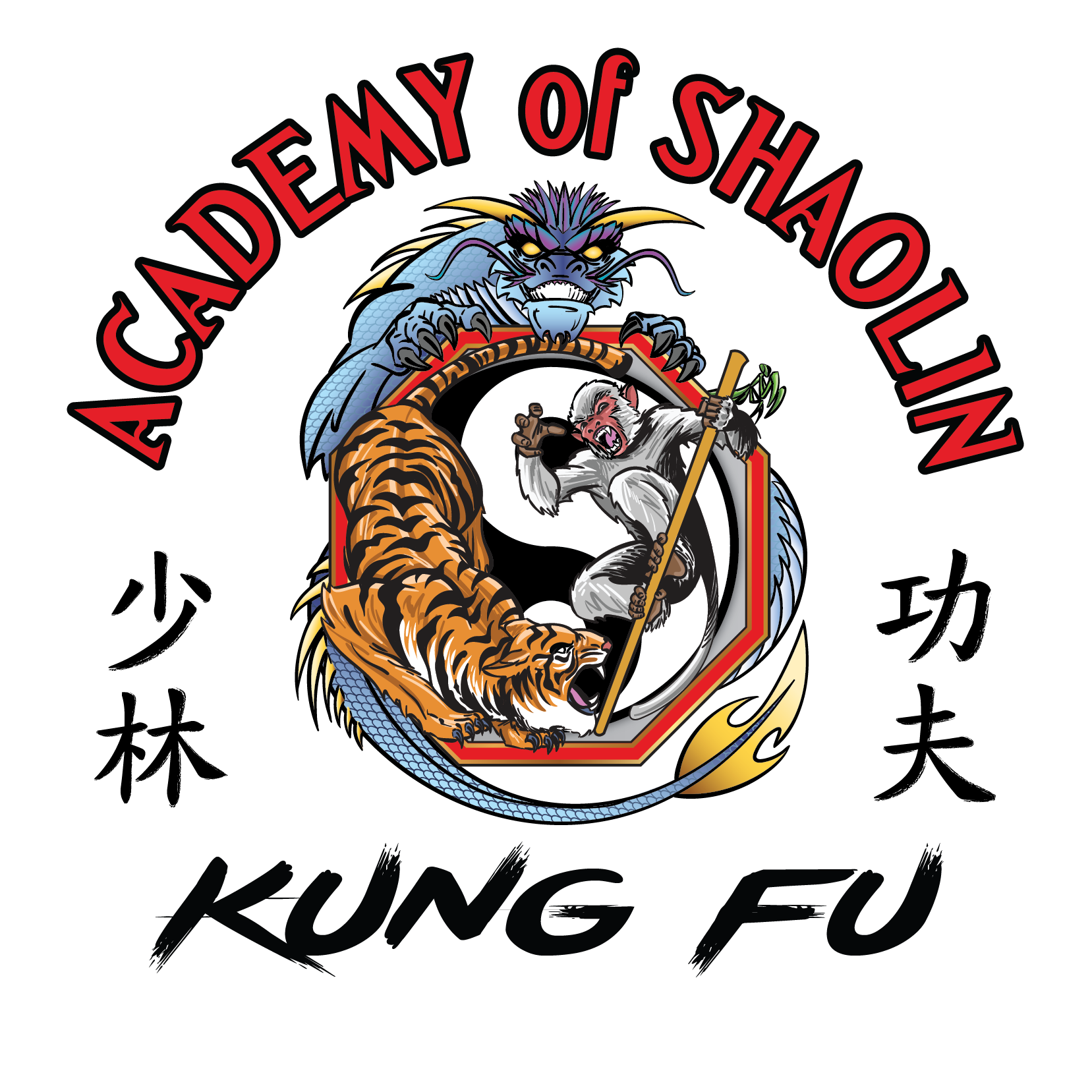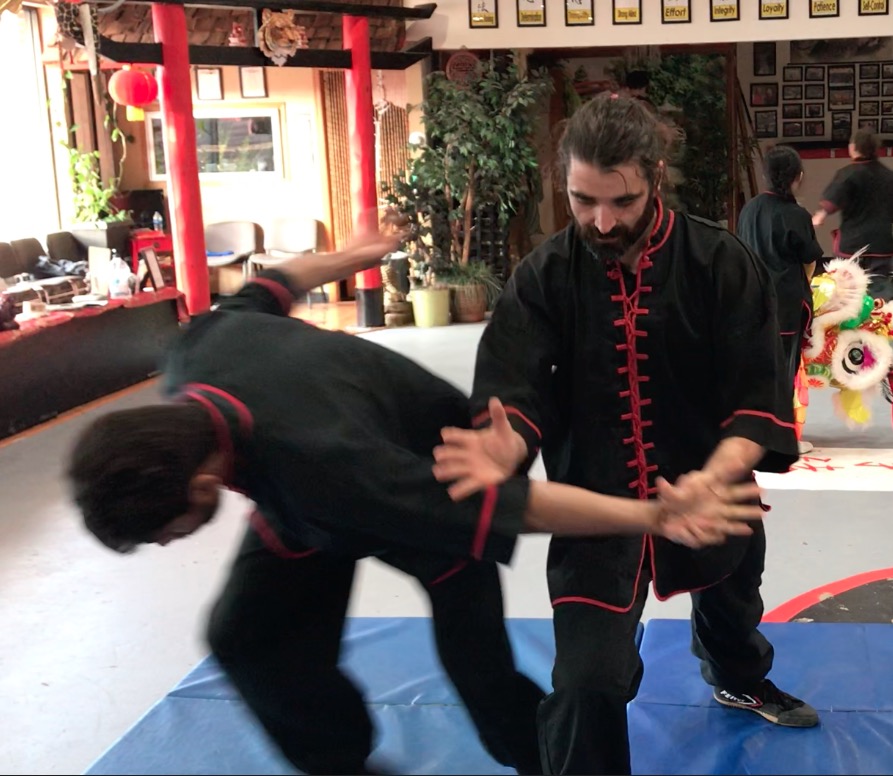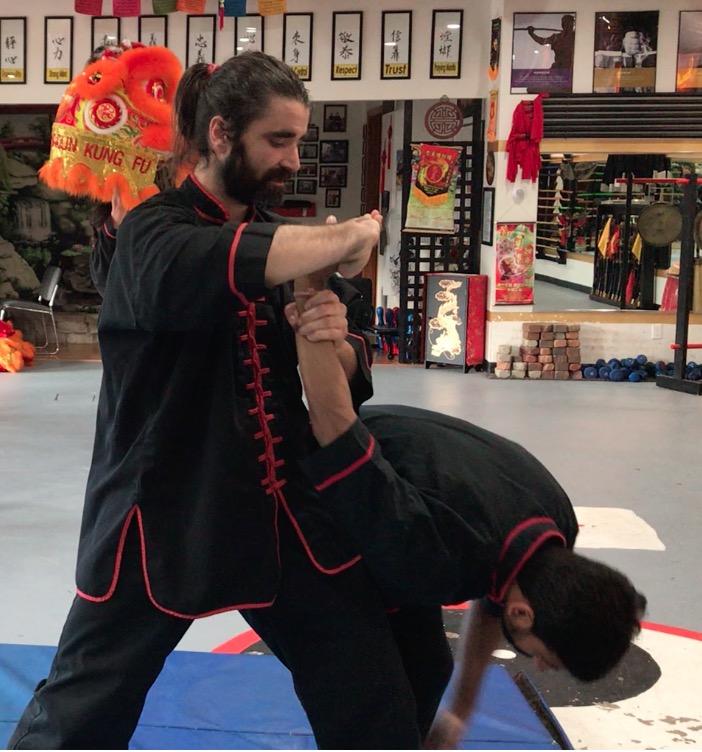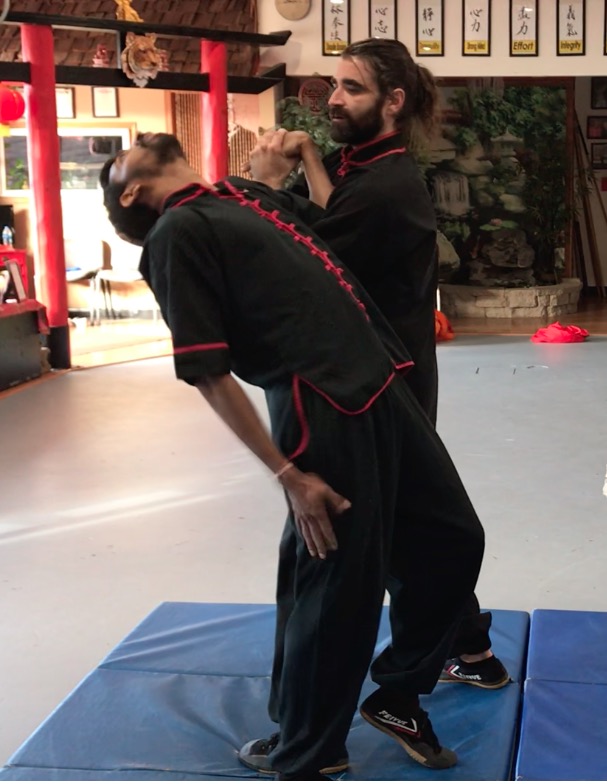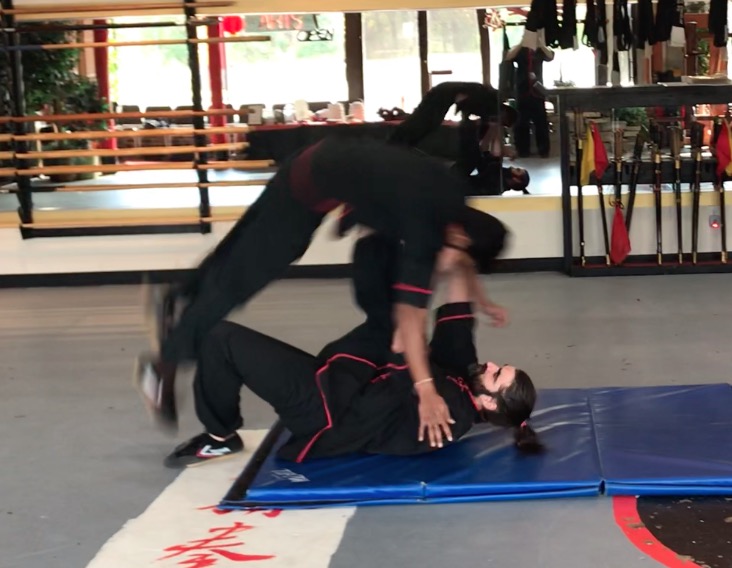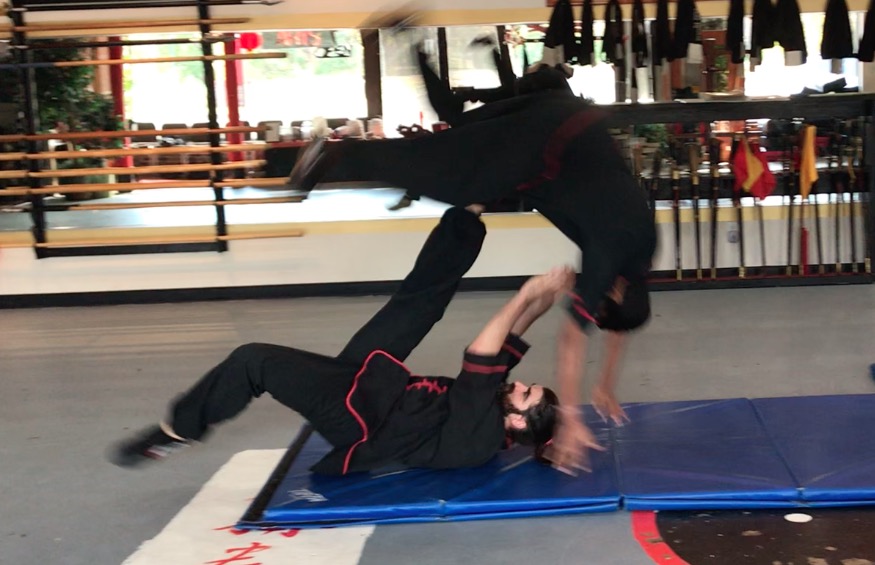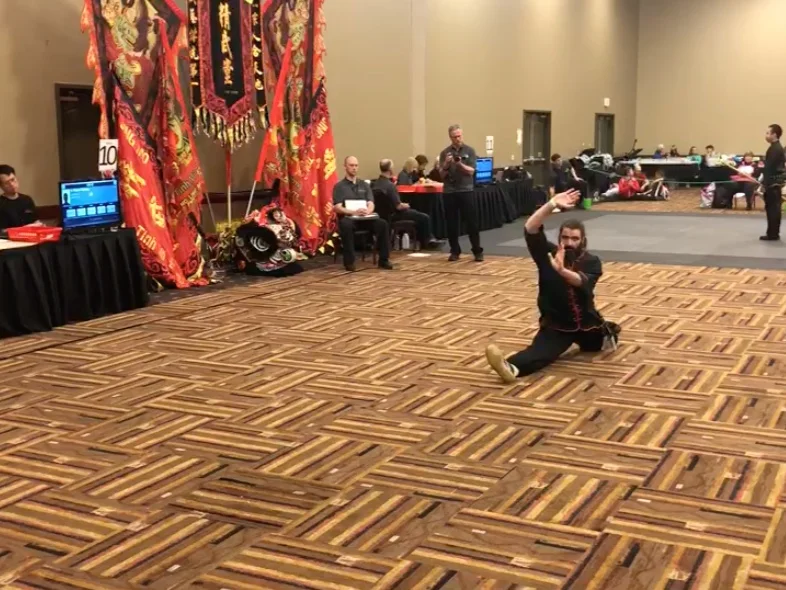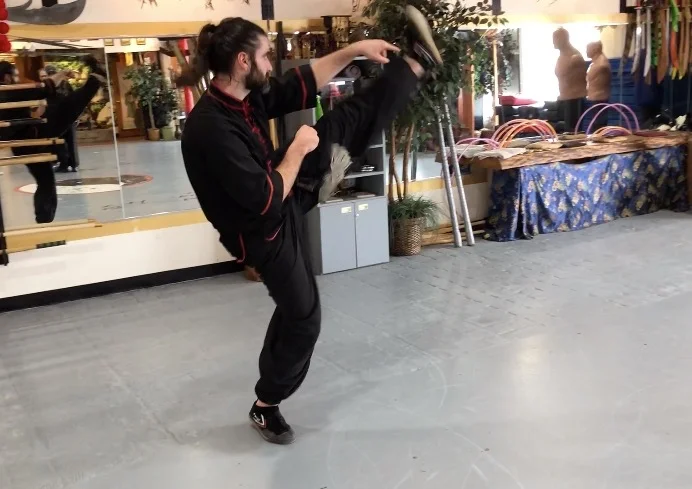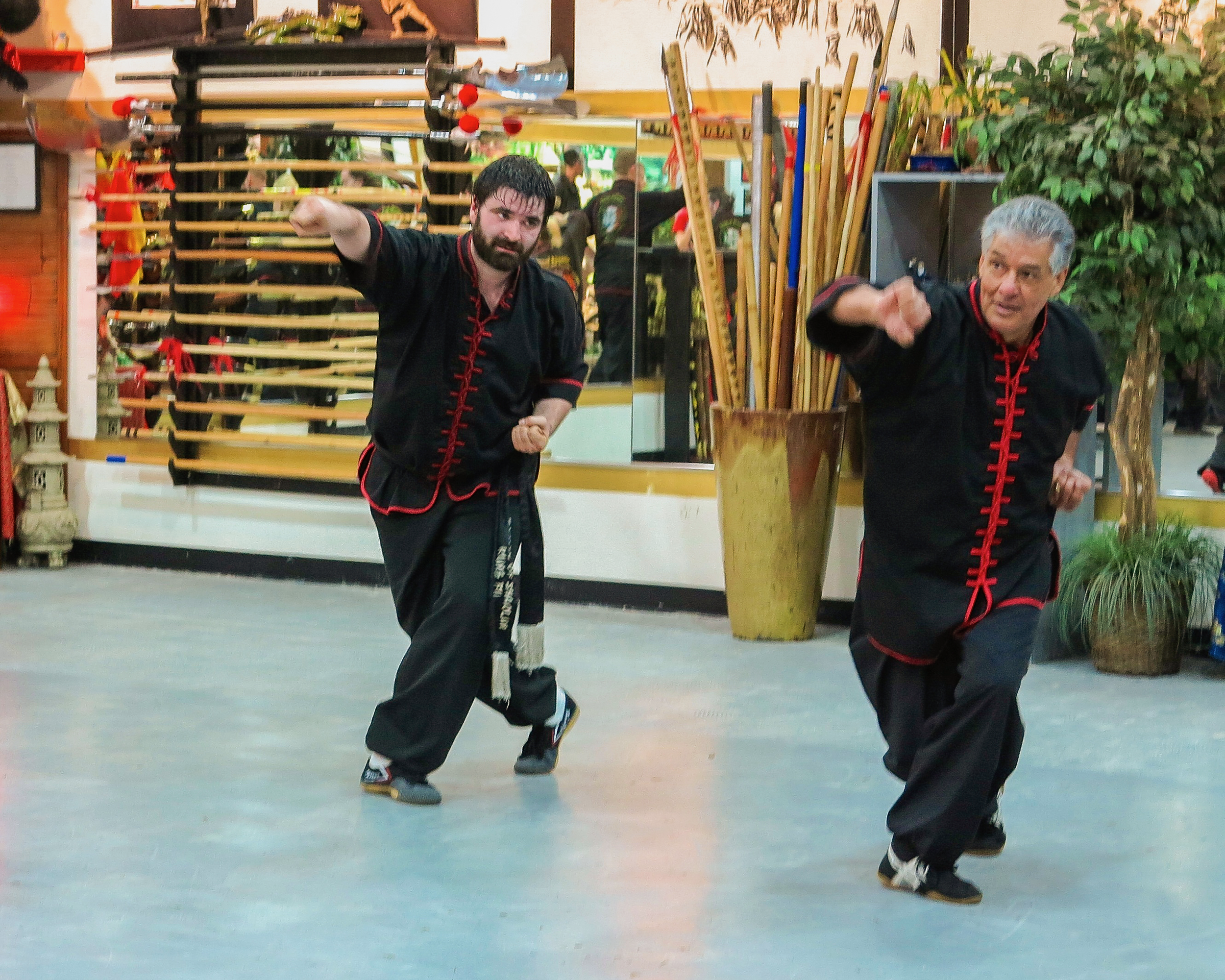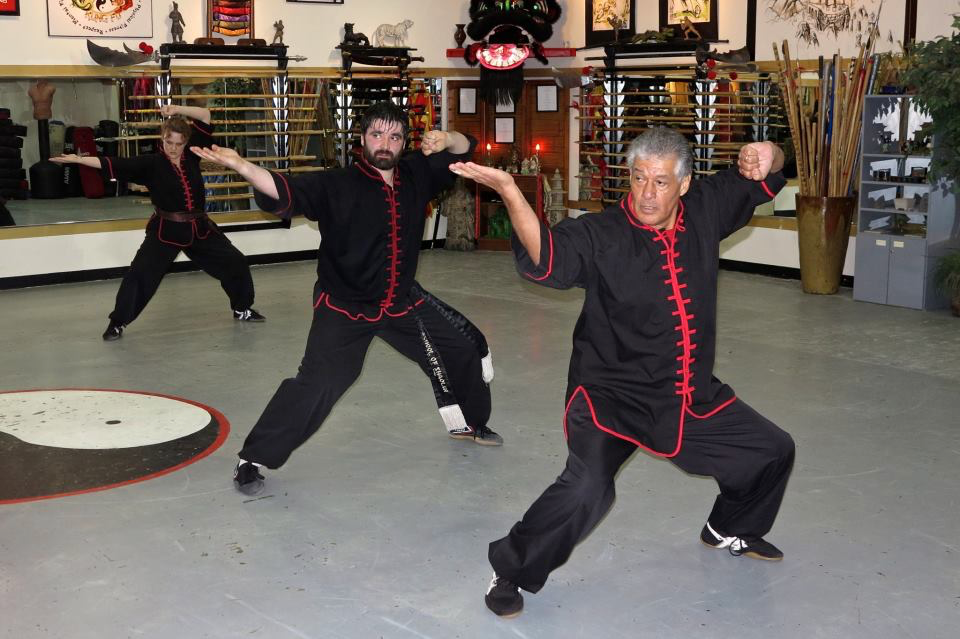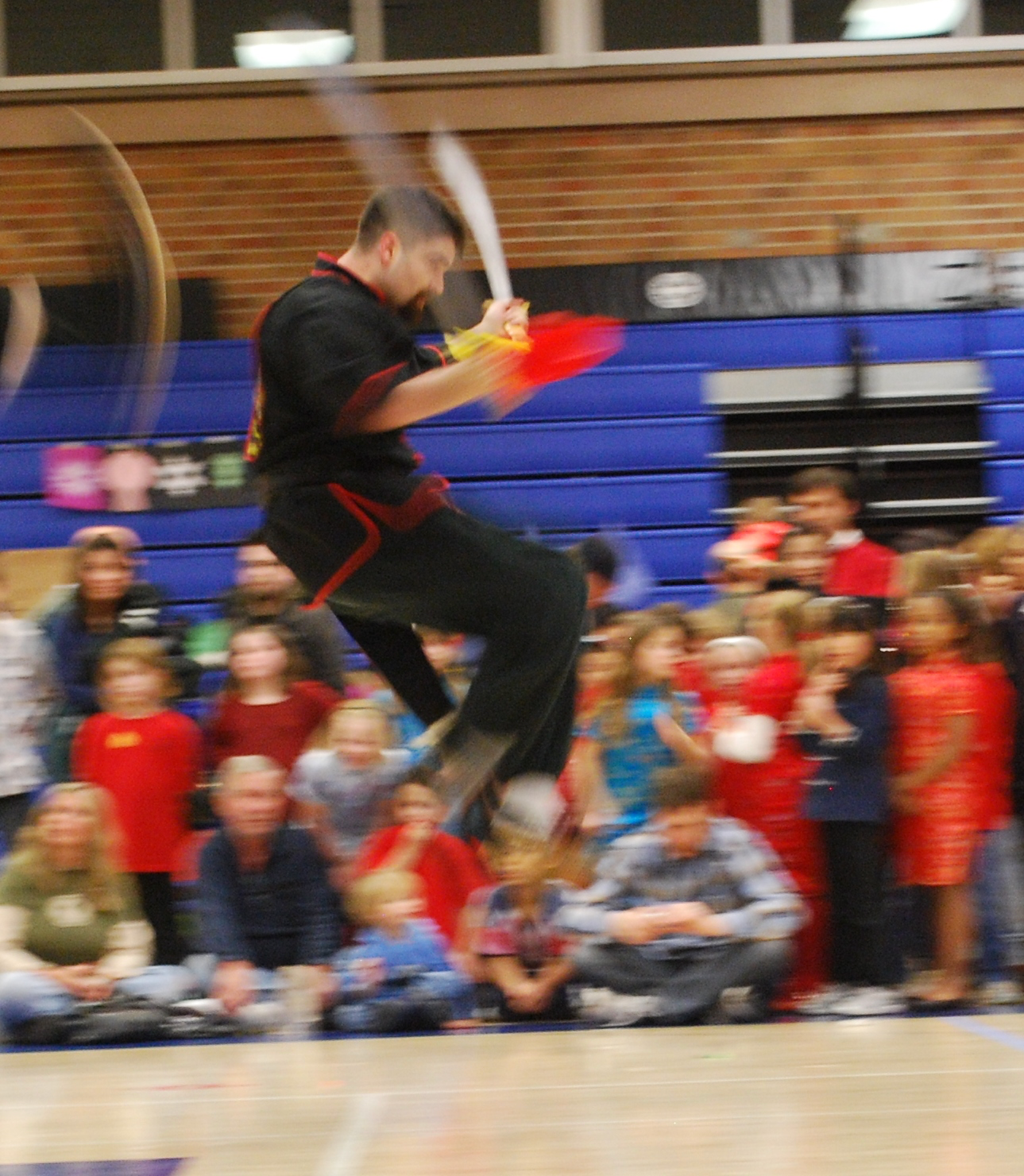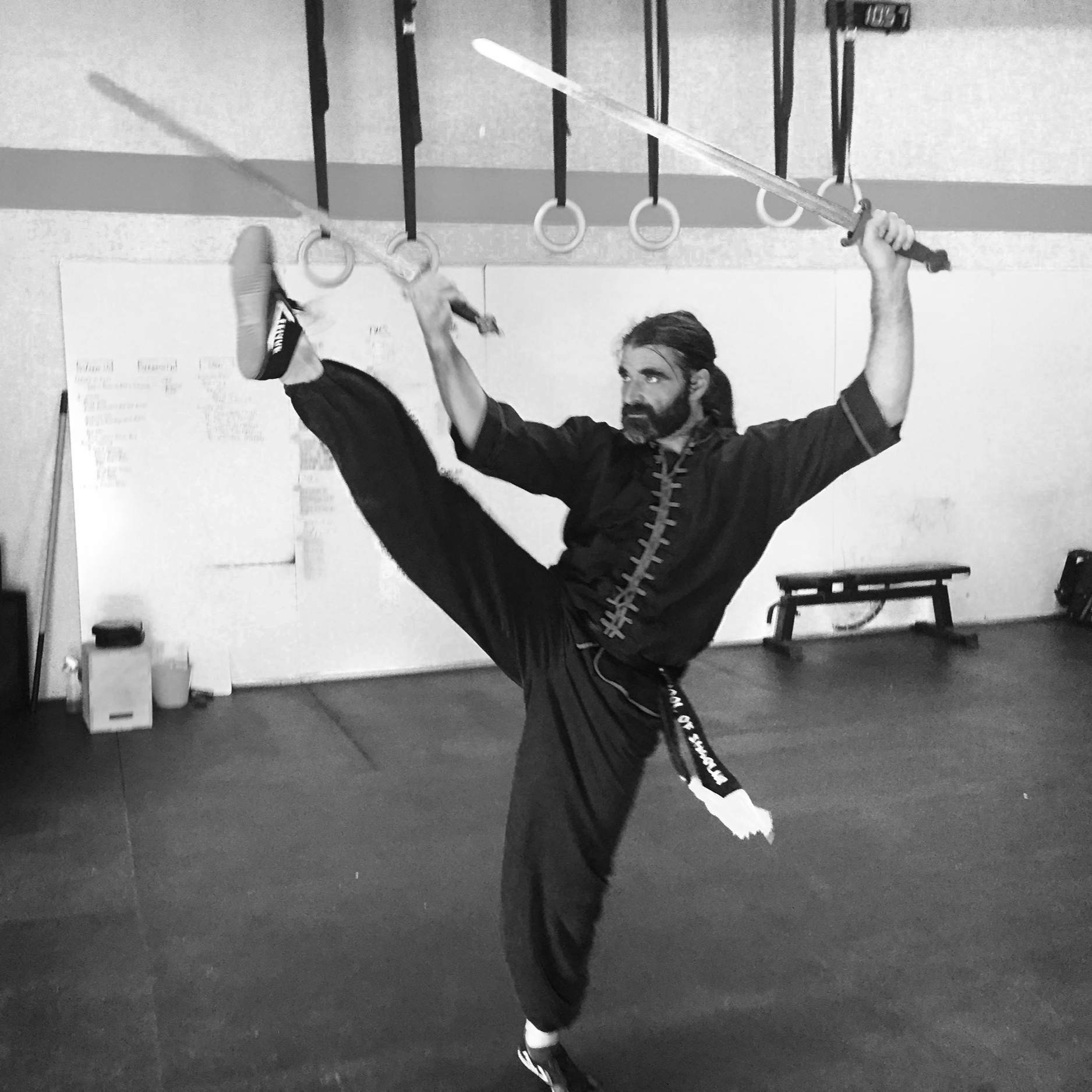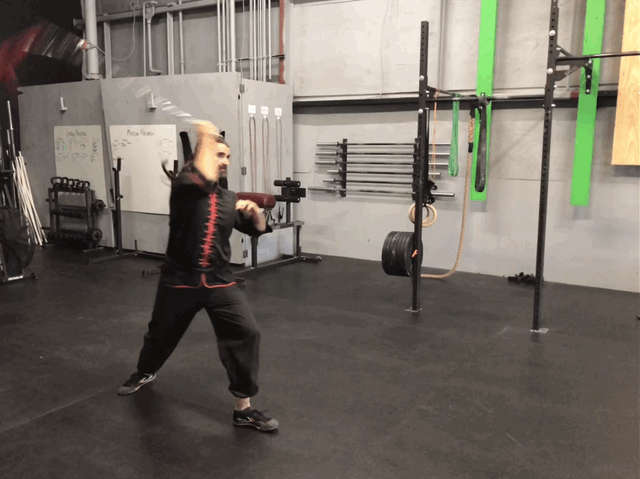How We Train
Training Method
At Academy of Shaolin Kung Fu our training is a forms based traditional kung fu system. The students learn self defense and martial arts techniques by developing a martial artist’s mind set. This philosophy is rooted in learning the forms from a combination of observation and repetition. The repetition of these forms creates muscle memory teaching the body how to respond under stressful situations, without engaging the ‘thinking’ mind. This saves valuable time in a self defense situation. The forms are taught in a progression that will develop the student’s mental and physical health, while increasing the martial artist’s competency and confidence. As a student progresses on this path, the practice increases focus, constitution, endurance and the capacity to grow. We teach our students martial arts skills through forms as well as Chin Na (Self Defense), Shuai Chiao (Chinese Wrestling), and basic calisthenic techniques. We begin forms training with Tan Tui before moving into our three styles of forms whose lineages reach back to the Shaolin temple; Tai Chi Praying Mantis, Seven Star Praying Mantis and Northern Shaolin Longfist (Bak Silum) styles of Kung Fu. We also train in numerous weapons sets and other traditional martial arts.
Chin Na (Self Defense)
Chin Na is a collection of self defense techniques from basic to advanced. Learning Chin Na increases knowledge of the how the different parts of the body work and can be leveraged in life and death matters through self defense applications. These techniques help individuals protect themselves during attacks or compromising situations as well as build confidence in knowing that they can protect themselves. These sessions increase understanding through experimentation. Learning how a slight change in wrist position can be the difference between a technique that is effective or not.
Shuai Chiao (Chinese Wresting)
Shuai Chiao, which is sometimes referred to as Chinese wrestling, is where our students learn proper rolling, falling, and throwing techniques. Shuai Chiao is taught to keep the body safer while learning effective close range techniques. The general idea is to take the force generated by falling from gravity and to disperse it over a larger surface area to minimize total impact. Forward rolls are a very common aspect of many martial arts as they allow individuals to jump over large objects while landing safely and returning to a standing position ready for the next task. Learning to fall correctly is especially important here in icy Minnesota as it can help prevent broken bones and other injuries. Through regular practice of Shuai Chiao, the bone density is increased and in turns make the bones more difficult to damage from blunt force trauma.
Tan Tui
Tan tui is a 12 form set of beginners forms that are traditionally used to warm up the body and teach very basic stances. They are very short and are a good introduction to the process of learning a Kung Fu form. These sets are the first step into learning how blocking and dodging are used with striking for effective technique.
Northern Shaolin Longfist (Bak Silum)
Northern Shaolin Longfist (Bak Silum) is a set of 10 Kung Fu forms that have been passed down from Sifu to student with a lineage tracing all the way back to the Shaolin temple. Northern Shaolin Kung Fu is known as a brave form. These sets are marked by large bold movements that make up range between your opponent and yourself. This helps keep pressure on your opponent by keeping pressing the attack through pairing strikes with defense applications. Northern Shaolin style of kung fu is famous for including large movements like varieties of sweeps, jumping and spinning kicks. As a student progresses through the 10 form set and sash (belt) levels, they are continually challenged to improve the body. Focus is developed to a level to force the body to change to the form, rather than the form changing to the student’s body.
Seven Star Praying Mantis
Seven Star Praying Mantis is one of five Praying Mantis Styles of Kung Fu forms that have been passed down from Sifu to student with a lineage tracing all the way back to the Shaolin temple. This set of forms is a mantis style kung fu meaning that the movements here are small and powerful designed for restricted spaces. Seven Star Praying Mantis combines striking and blocking movements for efficient and direct defense applications. Praying Mantis styles are noted for monkey stepping.
Tai Chi Praying Mantis
Tai Chi Praying Mantis is a one of five styles of Praying Mantis Kung Fu that have been passed down in the traditional style of Sifu to student. The lineage of practitioners trace all the way back to the Shaolin temple. This style of forms is a mantis style kung fu that incorporates some theory of tai chi, meaning that the movements are small and powerful, yet naturally flow from one position to the next. Tai Chi Praying Mantis is designed for applications that can be performed in restricted spaces. It is known that every time you strike a practitioner of Tai Chi Praying Mantis Kung Fu, you are helping them learn.
Weapons Sets
Weapon sets are taught to students when they reach the appropriate sash (belt) levels. The reasoning behind waiting to teach advanced weapons is that the student needs to develop the focus, physicality, and ability to respect what using a weapon means. WuShu metal is not allowed during these practices as it provides a false sense of ability and security. There are a rich diversity of weapons taught at the Academy of Shaolin Kung Fu:
Staff
Dao (Chinese Saber)
Jian (Double Edge Sword)
Spear
Kwan Dao
Double Dao
Double Jian
3-Sectional Staff (Triple Stick)
Hook Swords
War Fan
Fu Chen (Horse Tail)
Other Traditional Martial Arts
The above forms are supplemented with a variety of forms that add to the practice and challenge the practitioner in unique ways. They include 2 man sets, both open hand and weapons. One of the more notable forms in this category is Northern Shaolin Drunken Kung Fu set. This is an acrobatic, high intensity form that requires an advanced understanding of Shuai Chaio and how the body works.
